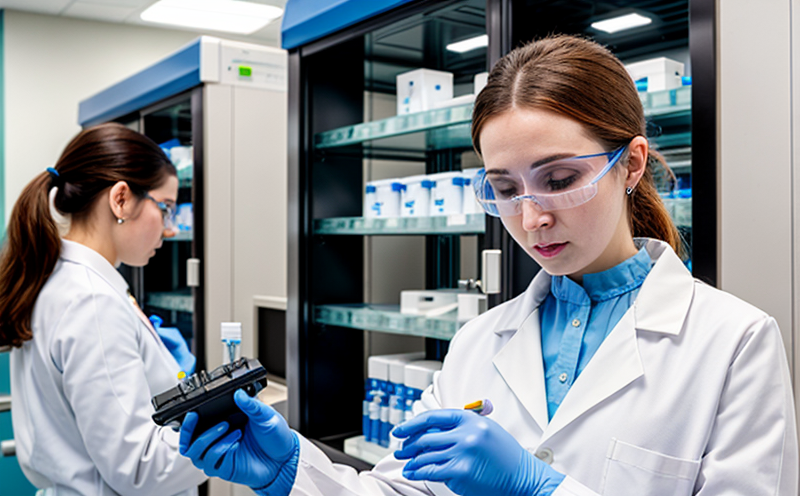Volumetric Absorptive Micro Sampling Testing
In the realm of pharmaceutical testing, ensuring the purity and efficacy of active pharmaceutical ingredients (APIs) is paramount. Volumetric Absorptive Micro Sampling Testing represents a sophisticated approach to bioanalytical testing that allows for precise measurement and quantification of trace amounts of substances within complex matrices. This method is particularly useful in scenarios where small sample volumes are required, such as in the early stages of drug development or during quality assurance checks.
The technique involves the use of a microsampling device designed to absorb minute quantities of liquid from a larger volume. The absorbed sample is then transferred to another medium for further analysis using sensitive analytical instruments like HPLC (High-Performance Liquid Chromatography) or LC-MS/MS (Liquid Chromatography-Mass Spectrometry). This approach ensures that the integrity of the sample is maintained, reducing the risk of contamination and ensuring accurate results.
The process begins with the selection of the appropriate microsampling device based on the specific requirements of the test. Factors such as the volume to be sampled, the nature of the matrix, and the sensitivity required for detection are critical considerations. Once selected, the device is placed in contact with the sample, typically via a syringe or pipette. The absorption process is initiated by applying gentle suction or pressure, depending on the design of the device.
The absorbed material is then eluted into an appropriate solvent and transferred to a vial for subsequent analysis. This step is crucial as it determines the efficiency with which the target analyte is captured and transferred for further processing. The use of high-quality solvents ensures that any potential interference from other components in the sample matrix is minimized.
The eluted solution undergoes rigorous analytical characterization using advanced instrumentation. In bioanalytical testing, this often involves HPLC coupled with a mass spectrometer to achieve both qualitative and quantitative analysis. The method's precision allows for the detection of even trace amounts of analytes, making it an invaluable tool in ensuring drug safety and efficacy.
One of the key advantages of Volumetric Absorptive Micro Sampling Testing is its ability to handle extremely small sample volumes efficiently. This capability is particularly beneficial when dealing with limited or precious samples, such as those derived from clinical trials or rare disease studies. The method also supports a wide range of analytes, including peptides, proteins, and small molecules, making it versatile for various pharmaceutical testing needs.
The analytical results generated by this technique are highly reliable due to the minimal sample loss during the microsampling process. This precision is achieved through careful calibration of the sampling device and meticulous handling throughout the procedure. The use of standardized procedures and adherence to international standards such as ISO 17025 ensures that the testing meets stringent quality control requirements.
Quality managers, compliance officers, and R&D engineers rely on this method for its ability to provide accurate and reproducible results. The data generated can be used to make informed decisions about drug development, manufacturing processes, and regulatory compliance. For procurement professionals, the efficiency of sample handling offers cost savings by reducing the need for large-scale sampling.
Industry Applications
- Clinical Trial Sample Management: Ensuring that only the necessary volume is taken from a patient's blood or plasma to avoid wastage and minimize discomfort.
- This helps in reducing costs associated with sample collection and storage while ensuring compliance with ethical guidelines.
- Pharmaceutical Quality Control: Rapid and accurate testing of raw materials and finished products to ensure they meet stringent quality standards.
Use Cases and Application Examples
- Development of New Therapeutics: Identifying the presence and concentration levels of active ingredients in experimental drug formulations.
- Drug Metabolism Studies: Monitoring the breakdown products of a drug to understand its pharmacokinetics and potential side effects.
- This information is crucial for optimizing dosing regimens and predicting patient responses.





